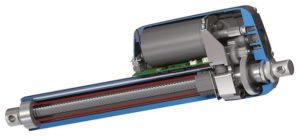Its Uses and Benefits
What Are Linear Actuators?

Unlike conventional actuators that produce movement through circular motion, High Speed Linear Actuators delivers high speeds through linear motion. More specifically, it works by extending and retracting a ‘nut’ against the ‘lead screw’ of the actuator mechanism. Most often, these types are used in machine tools and industrial machinery where linear motion is needed. However, what most of us do not know is that linear actuators can also be used in vehicle technology.
Linear Actuators and its Efficiency
Since most linear actuators convert linear motion into thrust through the utilization of a simple hydraulic mechanism with high speed and force, greater accuracy, and longer mechanical lifespan are ensured. The self-contained motion is also ideal to deliver kinetic energy even in smaller and more cramped spaces such as electric vehicles.
How Can Linear Actuators Be Used for Electric Vehicles?
We do know that linear actuators provide an efficient energy-to-movement conversion; aside from this, these types of actuators are also recognized for an excellent degree of safety when used for

mobility. The extra layer of protection is due to its ability to withstand vibrations in rugged conditions. Plus, these types of actuators are ‘maintenance-free,’ thus saving the user from the usual hassle of a hydraulic type actuator.
Since electric vehicles are known for their more efficient use of energy to provide motion, linear actuators are perfect replacements for conventional engines to provide better, quieter and safer motion. There are already plenty of experiments that show that aside from the preciseness delivered by the use of linear actuators, smoother airflow is also ensured in the car’s throttle bypass valve. This feature ensures that idling is at its optimal state at all times. Lastly, this type of actuator is widely known for its cost-effective method of delivering torque from engine to the driveshaft. Couple this with an electric vehicle’s capability of delivering robust and smooth acceleration, then this should provide you with an undoubtedly faster and cost-efficient machine.
